Blood clot breakthrough, and a fossil forgery
In the news pod, a study into the DNA of ancient humans has found what are potentially the oldest examples of genetic diseases like Down syndrome. Also, new insights into whale song, a potential new treatment for blood clots, and lifting the lid on a phony fossil...
In this episode
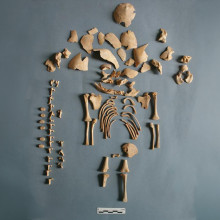
00:53 - Oldest documented case of Down's syndrome discovered
Oldest documented case of Down's syndrome discovered
Ben Rorhlach, Max Planck Institute for Evolutionary Anthropology & University of Adelaide
Prehistoric - and most likely the oldest documented - cases of Down’s Syndrome, which is caused by having an extra copy of chromosome number 21, and an even rarer condition called Edward’s Syndrome, caused by carrying an extra copy of chromosome 18, have been announced this week by an international team of researchers. Writing in the journal Nature Communications, they’ve used highly sensitive DNA techniques to count the chromosome copy numbers in samples collected from ancient skeletons found in various places in Europe. The oldest goes back about 5000 years. The results show that not only were these same genetic conditions occurring at similar rates back in history, but ancient societies clearly cared for and cherished these individuals. Ben Rohrlach is at the University of Adelaide and one of the team who made the discovery, although they didn’t set out to answer this question specifically at the outset…
Ben - Initially we didn't have a question. We were just exploring what is a very, very large database of eight years now of sample collection at the institute I worked at. And I guess that once we realised that we could detect down syndrome and similar things, what we were really interested at that point was what we could tell about these individuals from their burials and from their skeletons that could inform us about more of their lives.
Chris - How does one go about detecting something like Down syndrome in ancient DNA?
Ben - What we did was we looked at the amount of DNA in a sample that came from each of the chromosomes. And in doing so, we could work out when we observed too much coming from one of them. And that was the indicator or the big red flag for Down syndrome and for Edwards syndrome.
Chris - What does this tell you about the likely frequency with which these conditions occurred historically compared to the modern era
Ben - With modern data, one of the only things we know that can affect the rate of cases of Down syndrome and Edwards syndrome is the age of the mother. And when we looked at how many cases we'd found, we found that it wasn't particularly different from the modern rate. But it's worth noting that because these individuals unfortunately had a short life expectancy before modern medicine, they were all quite young when they died, and it's difficult to find smaller and smaller skeletons. So we also don't know what we didn't find.
Chris - So what do you deduce then about how people back in the day, maybe even 5,000 years ago, regarded individuals with things like Down Syndrome and how they behave towards them?
Ben - I think from what we have observed, all we can say is that these cases, these six cases that we found, these babies were loved just as much as any baby today. One of these babies was buried with a very ornate necklace at another site. The baby was buried in the home and would've been with them long after the burial in sort of a spiritual way. And there was another case where the baby was buried in a beautiful dress in a Christian Church, in Helsinki. These babies were clearly cared for and loved. And I think that that's easy to understand because that's exactly how it would be today.
Chris - And in terms of the science behind this, how has this helped to push the envelope? What insights has this given scientists like yourself now looking at these sorts of questions?
Ben - I think the most critical thing is that it's possible and that people want to know about it. I think they're two really important points, but I think the third one from a purely scientific point of view is that we're starting to get enough ancient DNA samples and individuals in the record that we can start looking for things that weren't common. So we know a lot about the Black Plague because so many people are affected by it, but we don't know about these individual disorders, diseases, conditions. We don't know much about how the community viewed these people either, and we really don't know a lot about how they were cared for. And so I think this opens the door for those conversations, which were definitely there in archeology, but you can't diagnose these cases from just skeletons. You need the DNA. And so now it allows us to look at more cases, more conditions, and I think that pushes that envelope.
Chris - It's amazing to think we might be able to do a sort of molecular post-mortem 5,000 years after a person died and work out some of the diseases that they at least had, if not died from.
Ben - Absolutely. And the amazing part for me when I think about this is 5,000 years after the fact, we will discover these things and they will have never known. And it's sort of almost time travel in a sense.
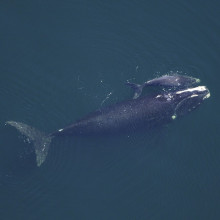
05:28 - How whales evolved to sing
How whales evolved to sing
Coen Elemans, University of Southern Denmark
The sound of whalesong can be a source of great relaxation for many, but the way that these giants of the deep produced such alien noises has long been a mystery. Until now.
Will - In 1970, a sound very similar to this one was recorded by Katie and Roger Payne for the first time. < Whale Song > The revelation that whales create such diverse and beautiful calls proved that these giants were not just hunks of meat to kill and eat, but intelligent and complex beings. But these calls aren't the only kind of calls whales can make. A lot of whale calls sound more like this < Deep, low rumbling > and a large vocal range is pretty essential to whale survival. As the University of Southern Denmark's Coen Elemens explains.
Coen - Communication by sound is really important for actually all whales. And that is because if you're imagining being out in the open ocean and you would drop into the water, there is no way you can communicate with vision and sound is the only means where you can communicate over very large distances. And if they can't find each other, they can't mate. So it's really important they're able to find each other and they do this by using sound.
Will - And despite anyone that's ever listened to a self help CD being aware of whale song, up until now we simply didn't know how they did it. It's very hard to study an organism that when it dies, either sinks to the bottom of the sea or explodes on a beach. Us humans, we rely on our larynx and vocal cords to wobble air in the way we want to create noise. But about 50 million years ago, the whale's ancestor transitioned from land to water, and that brings with it a couple of challenges.
Coen - They had a huge problem because they now had to breathe in and out, huge volumes of air very rapidly. When you have vocal folds sitting in the way, then basically this really impedes the ability to breathe when they go to the surface. So what we found instead is that these animals have a big U-shaped cartilage sitting in their larynx, and that keeps their larynx basically open when they exhale and inhale these huge amounts of air within seconds.
Will - So that allowed them to breathe. But anyone that's ever tried to shout underwater with a traditional larynx will tell you the sound doesn't really carry across the hundreds of miles that whales need to keep in touch with one another.
Coen - What we see now is that these animals have evolved a structure that sits on the inside of the larynx and we best described as sort of a cushion. It's like a big chunk of fat with a muscle attached to it. And when they rotate this u-shaped cartilage against this cushion, then they're able to vibrate this cushion again with air. And that couples really well into the water. And it's these very low frequency sounds that are audible at large distances,
Will - A fascinating set of solutions. But they do come with limitations, which have been exposed by factors that millions of years of evolution really couldn't have foreseen.
Coen - This new mechanism we found is probably used by all the baleen whales and they're made for very low frequency calls. Using our experiments and combining this with computer simulations, we could estimate the range of frequencies these animals can make, but also what's the range of depth at which they can make these sounds? You can imagine if you take a balloon down on the water, it shrinks really rapidly because the air is compressing. And the same is happening with the air in the whale lungs. If you go deeper than let's say a hundred metres, there's just not enough air for these animals to make sound. And the other limit is the frequency range. So these animals can use this mechanism probably from like 20 or 10 Hz to about 300 Hz. And this frequency range and also the depth range from surface to hundred metres is where humans make most boating noise. So that means that the overlap of this noise greatly reduces the distance at which these animals can talk to each other.
Will - Marine noise from shipping and drilling and mining, once again rears its ugly head. The frequency of man-made noise drowns out whale conversation at the surface and the pressure at greater depth is too great for whales to produce strong enough sound. But now that we know the mechanism, is there anything we can do to keep the whales chatting?
Coen - I think we actually can do something about this. So people are aware of the noises we make in the ocean and there are laws being made to mitigate basically the sounds we make. And I hope what we now can contribute is to really say this is frequency ranges and depth ranges where these animals just cannot escape our noise. So we have to either find a way to make noise in other frequency bands or time it differently or maybe you can drive some innovations to change the sounds that boats make. This is very well possible. So I think now we have a good physiological line of evidence to show that these animals are not just able to sing higher because this will take evolutionary timescales and not human timescales.
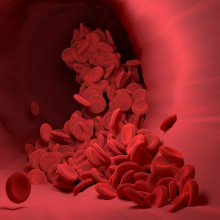
11:03 - Breakthrough in blood clot breakdown treatment
Breakthrough in blood clot breakdown treatment
Christian Kastrup, University of British Columbia
Bleeding disorders are very common: some of them affect as many as one person in every one hundred. And in the case of conditions like haemophilia, where blood fails to clot efficiently, which can lead to painful sustained bleeds into joints, internal organs and even the brain, the emphasis on treating the problem has focused hitherto on replacing the clotting chemical factor that’s missing from the blood in affected people. This often necessitates daily injections. But as Christian Kastrup, at the University of British Columbia has shown this week, we might be able to think about treating this in a different way: rather than making blood clot better, perhaps we can reduce the ability of the blood to break down blood clots, a process driven by an enzyme called plasmin. This is actually activated as soon as a blood clot starts to form. The purpose of this apparently counter-intuitive measures is to prevent the clotting system going out of control and blocking blood vessels. So he’s developed a way, using mRNA a bit like the Covid vaccine technology, to temporarily turn down the production of the precursor chemical used to make plasmin in the liver. The result is a rebalancing of the clotting process…
Christian - During bleeding, what happens in a normal situation, our blood will react and it'll set off a process where proteins accumulate, then that's called a blood clot. But the problem is for some people, they don't have the right proteins in their blood. They might be missing a protein, and so they're not able to form a really good blood clot. And so that can lead to excessive bleeding. And so what we wanted to do in this study was to come up with a way to control the proteins in the blood to help make that blood clot stronger and help prevent it from getting degraded by the enzymes that would normally degrade blood clots in blood.
Chris - Because in the circulation there's a sort of dynamic equilibrium, a seesaw in operation where the body's trying to clot, but at the same time trying to break down a clot. And so you've got the things in balance in the healthy situation. So in someone who has a bleeding disorder like haemophilia, is the seesaw tipped too far one way and you are saying, well, can we try and balance it back up again?
Christian - Yeah, that's exactly right. Someone with a bleeding disorder, and there's many different types that can include haemophilia or von Wands disease or many other types of bleeding disorders. It's hard to form a blood clot in the wound. And sometimes in those cases, the blood clot is not very strong. And so that that balance that you're referring to, the balance can come into play and the blood clot can be degraded before it's able to do its job and stop the bleeding. And so what we're trying to do in this study is to create an agent that can help remove those enzymes that degrade blood clots. And so by doing that, any blood clot that the person's bleeding disorders will form, even though normally it'd be unstable, we can make it more stable.
Chris - It's effectively then taking some weight off one side of the seesaw. So it does tip the balance back a bit more.
Christian - Yep, that's exactly right. So we tip the balance away from having too much degradation of the blood clot back to where it's in balance and the person would be able to form a stable blood clot.
Chris - So what is the element or the chemical that you've gone for to try to balance things up a bit more?
Christian - The chemical we've gone after is an enzyme called plasmin. Plasma's role in the body is to degrade the clot. And in the clot there's another protein called fibrin. And so what plasmin does is it comes in and cleaves fibrin and helps dissolve the blood clot. We wanted to come up with a way to remove some of that plasmin to rebalance the system. Plasma in the enzyme actually comes from this protein plasminogen and plasminogen is circulating in our bodies all the time. But where the blood clots form, that's where plasminogen leads to plasmin. And so we targeted plasminogen and we target it where it's made in the liver from messenger RNA. So develop an agent that would degrade that mRNA, which then removes plasminogen from the blood and then prevents the formation of plasmin and prevents excessive degradation of the blood clot.
Chris - How long does the effect last for? So if you take an individual or an animal that's got a bleeding problem, how long can you control it with this technology?
Christian - The advantage of this technology is that it has a really long acting time. So when we do one injection targeting plasminogen, it actually decreases the amount of plasminogen for several weeks.
Chris - And how effective is it if you do this in the animal equivalent of haemophilia? For example, can you do what you set out to achieve, which is to rebalance the clotting system so that you don't have bleeding problems anymore?
Christian - It's very effective. If plasminogen is normally at a hundred percent, we can take it down to a 5 - 10%. And in animal models of bleeding disorders, it's really effective at decreasing the amount of blood loss. And so with animals that have haemophilia A, they would normally bleed a lot more than normal animals. But with this therapy, the amount of time that they're bleeding for and the amount of blood loss they lose is much less when they're on the agent.
Chris - Is there not danger if you de-power the body's ability to bust its own clots that there's a chance you could end up clogging up blood vessels when you don't want to and you increase the risk of things like a coronary thrombus, a heart attack in other words, or a stroke?
Christian - It's a really good question for that. We looked really closely at people that actually have deficiencies in plasminogen. It's a rare condition, but it does occur, and it was really surprising. These patients, they don't have a risk of thrombosis. They don't have a risk of getting blood clots. And so what that tells us is if you have just a little bit of plasminogen in your blood, it's enough to degrade clots when we have a big clot in your blood vessel that shouldn't be there.
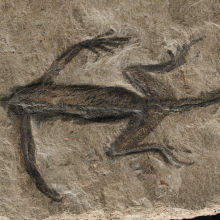
17:22 - Famous fossil found to be a forgery
Famous fossil found to be a forgery
Valentina Rossi, University College Cork
A remarkably complete fossil of a nearly 300 million year old reptile, Tridentinosaurus antiquus, had been purchased and displayed by the University of Padua since 1931. It has featured in many palaeontological articles and journals. But after all this time, a study led by University College Cork’s Valentina Rossi discovered that the specimen is more forgery than fossil...
Valentina - This fossil was supposed to be one of the best ever found fossil reptiles from the Alps, a fossil that doesn't only preserve the skeleton, but also preserves the soft tissues, meaning the skin, internal organs, and everything that comes with those tissues.
Will - And this had been brought into a museum and a university around about 1931, which puts it at about 93 years that no one had really noticed it was a forgery. What led you to discover it was?
Valentina - This fossil was found in a historical time. We sometimes say these are 'historical specimens' and those are key specimens because they have sometimes never been studied with very high tech methodology. This is because, in this particular case, we only have one of these species, and this is very difficult to study then because all the methods that you can use to study this type of fossil has to be non-destructive, because obviously the specimens are extremely valuable from a scientific point of view. This is why I think so far nobody has attempted to do a really detailed analysis because, honestly, before eight years ago, there wasn't the technology available to study fossils non-destructively. Now, with this project, we said, well, if this is really so important, we probably should study it.
Will - When you used your new array of microscopes and ways of looking at these fossils, when did you then realise that this fossil in particular wasn't all it was supposed to be?
Valentina - We scanned and photographed the specimen with a UV lamp. A UV lamp can help you figure out whether there are certain parts of the fossil that might have been retouched or if glues have been used and particular resins to glue parts together. But also there are certain inorganic pigments, manufactured pigments, that also glow under the UV lamp. With the UV lamp, we could see that the entirety of the fossil was glowing. I was like, hmm. Maybe there is some sort of resin on top? Then I decided to sample this material and I used scanning electron microscopy, which is a very powerful microscope, to see cell level details of tissues or fossils. Then, I did infrared spectroscopy. Matching these two techniques together was basically the holy grail because I couldn't see biological structures, I couldn't see a molecular signature typical of fossilised soft tissues, and then I figured out, okay, so the morphology of what I'm seeing and the chemistry is actually perfectly matching a carbon base, inorganic pigment. Then we figured out, okay, so this is just paint.
Will - It was just paint this whole time?
Valentina - Yes.
Will - Is it a complete forgery, then? Is any part of that fossil a fossil?
Valentina - The skin, it's complete forgery, but there are parts of the fossil that are real. For example, we found that for the femur and the tibias and fibulas, basically the hind limbs of the specimen, the bones are real. We also found very tiny bony scales. Those are called, technically, osteoderms, and they're very similar to the scales of a crocodile. So they're made of bones, they're very robust. In this case they're very tiny because the reptile was also pretty tiny. This is good because it means that it's not totally a fake.
Will - It is extraordinary that someone 90 odd years ago had a fragment of a fossil and went, I'm going to paint in the rest of it and pass it off as a complete species. Do you have any idea why this might have been done?
Valentina - This is a recurrent problem with fossils that have been partially forged or completely forged. There is a lack of documentation. This fossil was found 90 years ago. In between the discovery of the fossil and the official description of the fossil, there was World War II. It was obviously, historically, a very difficult time. Many documents during the time were basically lost because of the war. We don't know, maybe someone was just trying to find the rest of the skeleton, and it was by preparing the rock someone ended up carving the shape of a lizard. The use of paint of course didn't really help us, but maybe helped this person convince people that this was a real fossil, that certain parts were real. This is where we are at the moment, but unfortunately we have no records so anything is possible
Will - From this point onwards, it does really raise the question, the troubling question, of is anyone's favourite fossil actually real. Who knows? How pervasive do you think fossil forgery is in the palaeontological world?
Valentina - Fossil forgeries are definitely a problem. I think scientists are raising their voices, palaeontologists, fossil collectors and museums saying, we actually need to talk with governments about this because fossil material, it's seen most of the time as a very rare resource for many nations. Palaeontology somehow started this way. There were people collecting fossils on the beaches, on the mountains, and they were selling this to collectors. These collectors then became museum founders and they were still buying specimens. It's all well and good when it's regulated, but it also gave people an excuse to make up fossils to make money. There are many fossil shows in Europe, but also in the States, where there are so many fake fossils. And you think, if I buy a five euro fake trilobite for my collection, nothing's going to happen. Sure. But unfortunately this keeps adding money to the problem instead of actually solving it. There are many of us that are trying to work on this to protect fossil heritage because it's our past. Culturally it's also very important. It shouldn't be used this way.
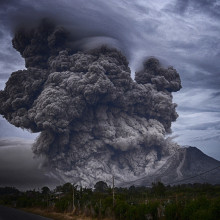
23:57 - How do volcanoes and farts impact climate change?
How do volcanoes and farts impact climate change?
Thanks to UCL's Mark Maslin for the answers!
Will - We've got a double feature this time round, both concerning certain emissions effects on climate change. We'll get to the unusual one in a moment. But the first question was sent in by listener Ranjith who asked, I've been seeing some claims that volcanoes produce a huge amount of CO2 in relation to humans. Could you clarify the situation? So we have tapped up the expertise of UCL's Mark Maslin.
Mark - So scientists have been measuring the amount of CO2 and other gases coming out of volcanoes for decades, and it looks like both land and submarine volcanoes, because of course there are volcanoes under the ocean. They emit about 0.13 gigatons to about 0.4 gigatons per year. Now that sounds like a huge amount, but if we compare it with all human carbon dioxide emissions, that's about 41 billion tons or gigatons of carbon. So humans emit about a hundred to 400 times the amount of CO2 coming from volcanoes.
Will - It feels like we've put the debate then to bed between humans and volcanoes. But correct me if I'm wrong, volcanoes also spit out a few things that stop as much of the sunlight hitting the earth as well.
Mark - We also know that volcanoes can have a negative effect on warming. So Pinatubo that erupted in 1991 spewed a lot of aerosols, mainly sulphur dioxide into the atmosphere, and that for one year reflected a little bit of sunlight and cooled the planet down just for a 12 month period. However, as scientists, we know that in the 1980s and the early 1990s, the amount of sulphur dioxide getting into the atmosphere because of industry, those aerosols were causing a little bit of cooling. So for us, the actual global warming was being masked by our pollution. Now, of course, we've cleaned up that air pollution because it's so bad for human health. And of course what we see is the underlying trend of global warming getting faster since then.
Will - And to finish this off, I must ask you the rather indelicate question coming in from listener Ben, who has asked about how much greenhouse gas does human flatulence emit.
Mark - Human farts are negligible in terms of the amount of methane the world produces. What we should be worried about is our cattle, which produce methane from both ends. And I'll give you a really big stat. We take the weight of land mammals on the planet. 30% are humans, but 67% of that weight is our livestock and our pets. That's a huge number. So only 3% of the mammals on the land surface are actually wild animals that David Attenborough goes and films for our enjoyment on a Sunday night on the sofa. So there are huge numbers of cattle producing huge amounts of methane. But add into that when we are actually producing huge amounts of wet rice from around the world, that produces lots of methane as well. So compared with this, our minuscule little farts are just irrelevant compared with the farts and burps of cattle, the actual amount of methane produced by our artificial wetlands, which are producing rice to feed the world.
Will - So don't think so much about volcanoes or your farts. Think about your diet. Thank you so much to Ranjith and Ben for their questions. And Mark Maslin for the answers. Next week we're answering this question sent in by listener, David.
David - I suffer from post viral chronic pain and fatigue and often joke that I need a body transplant. Is it possible to keep a head alive and fully functioning? I'd love to know the answer, but not really keen on being the first one to go our transplant
Will - And if you think you know the answer or have a question of your own, do send it in. The email address is 5livescience@bbc.co.uk.










Comments
Add a comment